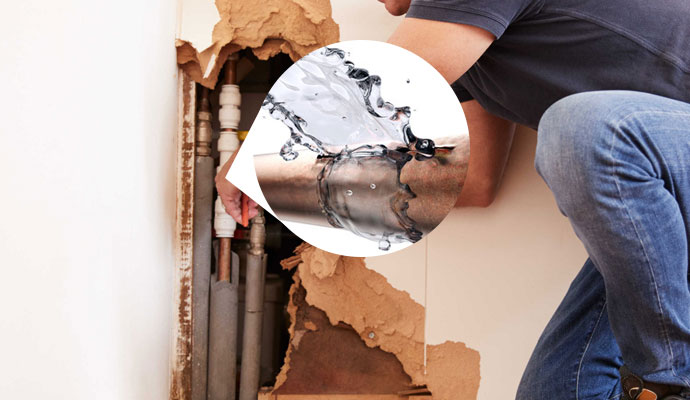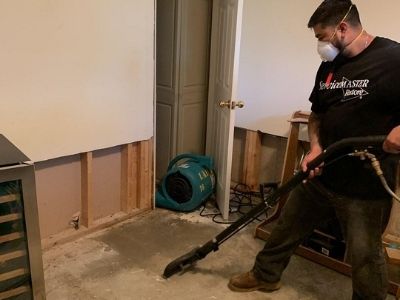Quick-Response Plumbing: Tips for Identifying as well as Fixing Ruptured Pipes
Quick-Response Plumbing: Tips for Identifying as well as Fixing Ruptured Pipes
Blog Article
This article which follows pertaining to How to Install and Connect a New Dishwasher is unquestionably compelling. Check it out for yourself and see what you think of it.

A burst pipe is a significant emergency; you can just stand as you watch water you pay very much to rejoin with the planet. In even worse cases, you discover a swimming pool on your kitchen area flooring, which is a wonderful trip risk, particularly if you have youngsters around. If the pipeline that ruptured remained in your walls, bad news: you may require to repaint that entire section.
Exactly how can a catastrophe like a ruptured pipeline be avoided as well as handled? Well, by paying attention to your specialist emergency plumbing professionals and also adhering to these rules.
How do I understand when my pipelines have ruptured?
Fluctuating water pressures
Pipes do not simply burst in a day. You might have seen that your kitchen tap or shower does not run immediately when you turn the faucet. It might stop briefly for a couple of secs and then blast you with even more force than usual.
In other instances, the water may seem typical initially, after that decrease in stress after a couple of secs.
Damp wall surfaces and also water stains
Before a pipe bursts, it will leak, most times. If this persistent leaking goes unnoticed, the leak may finish right into a vast wound in your pipe. One very easy means to prevent this emergency is to keep an eye out for damp wall surfaces advertisement water discolorations. These water discolorations will certainly lead you right to the leakage.
Puddles under pipelines as well as sinks
When a pipeline bursts, the outflow forms a puddle. It may appear that the pool is expanding in dimension, and also regardless of the number of times you mop the puddle, in a few mins, there's an additional one waiting to be cleansed. Commonly, you might not be able to trace the puddle to any noticeable pipelines. This is an indicator to call an expert plumber.
Untraceable dripping noises
Pipeline ruptureds can occur in the most unpleasant places, like within concrete, inside wall surfaces, or under sinks. When your house goes quiet, you may be able to listen to an irritatingly persistent trickling noise. Even after you have actually inspected your shower head and cooking area tap, the dripping might continue.
Beloved visitor, the dripping might be coming from a pipeline inside your walls. There isn't much you can do concerning that, other than inform an expert plumber.
Shut down the Water
When water freezes, it increases in quantity by regarding 9 percent. And it broadens with remarkable pressure: The pressure inside pipelines may go from 40 extra pounds per square inch to 40,000 psi! No pipe can hold that much stress, so it breaks open. The break might happen where the ice kinds, however more often, it occurs where water stress finds a weak point in the pipe. That might be inches or even feet from the frozen area. Locate the water shutoff valve as well as switch off the water to avoid more damages. You might additionally need to shut off the electrical energy as well, relying on where the leaks takes place as well as how large it is.
Contaminated water
Many individuals presume a ruptured pipe is a one-way outlet. Rather the contrary. As water drains of the hole or gash in your plumbing system, pollutants locate their way in.
Your water might be infected from the source, so if you can, examine if your water tank has any type of problems. Nonetheless, if your drinking water is provided and cleansed by the city government, you must call your plumber immediately if you see or smell anything amusing in your water.
What do I do when I find a ruptured pipe?
Your water meter will continue to run also while your water wastes. To reduce your losses, locate the main controls as well as transform the supply off. The water mains are an above-ground framework at the edge of your building.
How to Fix & Detect a Leaking Pipe
How Do I Know if a Pipe is Leaking?
Leak detection tests can help you determine if your pipe has a leak. Even if you don’t see an apparent leak, you should still conduct leak detection tests regularly to save water and money—and prevent major damage to your home.
Water meter. It can be helpful to figure out what your usual water meter usage numbers are and then monitor them regularly. To monitor your meter, first, turn off all water faucets in your home. Check the meter and write down the numbers. In a few hours, check the meter again. If the numbers have changed, you have a leak. Water gauge. Use a water gauge to test your water pressure. Your showerhead should produce a certain amount of water pressure based on its model and design. If the pressure is lower than it is supposed to be for that specific showerhead, your home likely has a leak. Puddles. Look inside your bathroom, laundry, and kitchen sink cabinets. Puddles around the cabinets or around toilets, tubs, showers, and washing machines indicate the presence of a leaking pipe. You may also notice loose tiles, peeling or flaking paint, or mold caused by water accumulation. Napkin test. Even if you don’t see any puddles, you may still have a leak. You can test for water leaks in the bathroom, laundry, and kitchen by wiping below-sink connections with a napkin, paper towel, or piece of toilet paper. If it becomes damp, you probably have a leaking pipe under the sink. Discolored walls. Walls that are discolored—usually with brown or yellow stains—or bulging might mean that they have been impacted by water damage caused by a leaking pipe. Smell. A leaky pipe will create sitting water, and over time, that water may develop a musty smell. If your home smells musty, but you can’t locate the source, it may be due to a leak. Steps for Fixing a Leaking Pipe
A leaky drain can be remedied by tightening the pipe base, replacing the drain seal, caulking the rim, and tightening the pipe nut. Similarly, a leaking toilet pipe can be treated by tightening the packing nut. You may also need to replace the valve. A leaky faucet may just need tightening or replacement of the washers. If that doesn’t work, consider replacing your faucet. If your pipe has a hole in it, you may want to use a pipe leak sealer or pipe leak tape. This quick fix for water pipe leaks can also temporarily fix a copper pipe leak. https://www.ahs.com/home-matters/quick-tips/how-to-tell-if-pipes-are-leaking/

Do you really like reading up on What to Know Before Installing a Dishwasher? Try leaving feedback down the page. We'd be pleased to see your opinion about this post. We are looking forward to see you back again in the near future. Don't hesitate to take the time to promote this blog post if you appreciated it. I value reading our article about How to Install and Connect a New Dishwasher.
Book My Estimate
Report this page